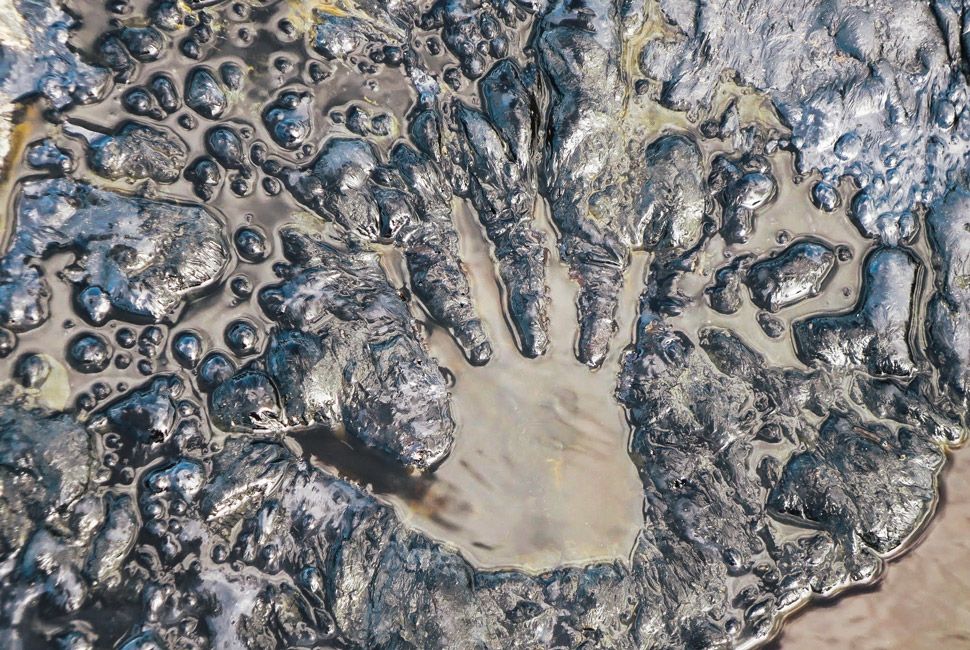ROAD N✍TES
Editor’s Note: Will McGough is always on the lookout for extraordinary adventure. He recently found it in the sticky situation surrounding Trinidad’s Tierra de Brea tar pit, one of the five largest of its kind in the world.
Those traveling to Caribbean islands tend to have pretty simple expectations: beaches, breezes, and babes in bikinis. Such were my thoughts on a recent swing through Trinidad, and so when my friend suggested we take a ride up north from Port of Spain to check out Tierra de Brea, I loaded my backpack with beer and hopped in the taxi van. Given that we were in the Caribbean, I assumed this Tierra de Brea was a bay or beach or something — and that wherever we ended up, it would be a pretty good place to drink those beers, or to “lime”, as the locals say.
MORE TROPICAL TRAVAILS The Belize Issue | Seeking the “Real” Hawaii | Kit: African Safari
Cracking one in the back of the van, I watched the world go by. Trinidad is indeed a beautiful island, but it is far from your typical tropical getaway. As I would come to learn, its economy is rooted in oil and natural gas, not tourism, and so there exists an authenticity that typically gets swept under the rug in other places. Dozens of dry-season-induced brush fires raged unabated alongside the highway, for example, and if there are rockier roads on the planet, I would sure like to know about them. Hearing my friend and I joke and hold our beers above our heads as the car rocked side to side through the potholes, our driver chimed in. “Once we get to Pitch Lake, you’ll see why I’m not laughing.”
Trinidad exports almost all of the stuff to the United States and Europe, resulting in lots of profit for the government and private companies but extremely poor road conditions at home.
That’s when I first realized where we were going and the Spanish clicked — Tierra de Brea means the land of tar, or Pitch Lake, as it is called. We asked our driver to tell us more. At 246 feet deep and 99 acres in size, it is the largest of the world’s five major tar pits. Legend says Sir Walter Raleigh was shown this black, sticky lake by locals when he arrived in Trinidad in search of El Dorado, the fabled city of gold, in the late 16th century. He used the tar to caulk his ships and was credited with its discovery when he returned to the UK with several barrels. Since then, the Trinidadians have been mining and processing the tar to be used in making asphalt.
Trinidad exports almost all of the stuff to the United States and Europe, resulting in lots of profit for the government and private companies but extremely poor road conditions at home. In that sense, it doesn’t take a genius to figure out why the locals are frustrated. The closer we got to Pitch Lake, the more signs we saw: “Fix Our Roads”, they read, scrawled in plain handwriting, strapped to street signs or telephone poles, clearly directed toward the government. I felt their pain as we rocked and rolled our way down the road just miles from the lake.
